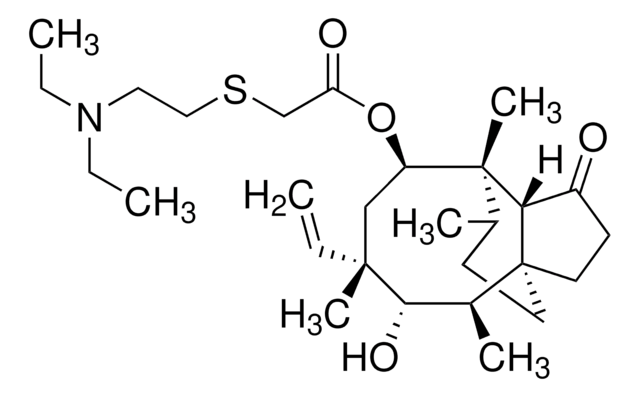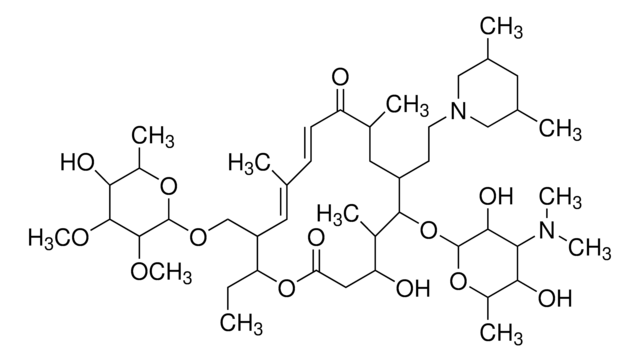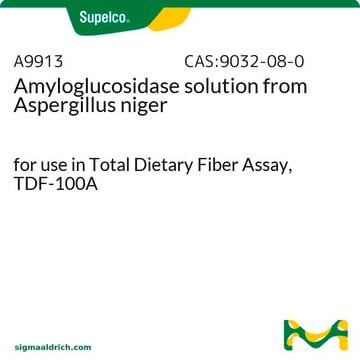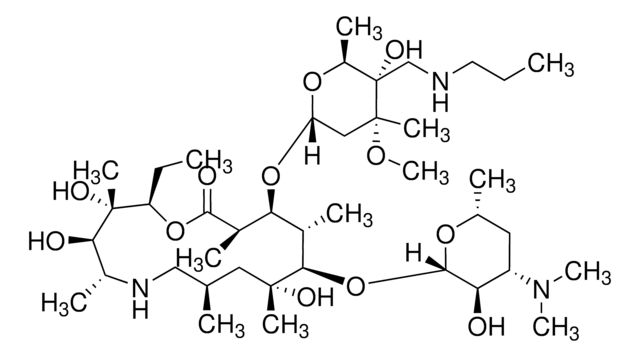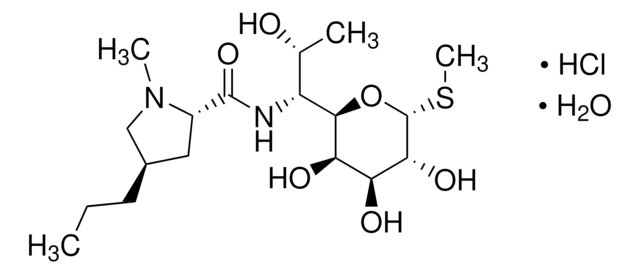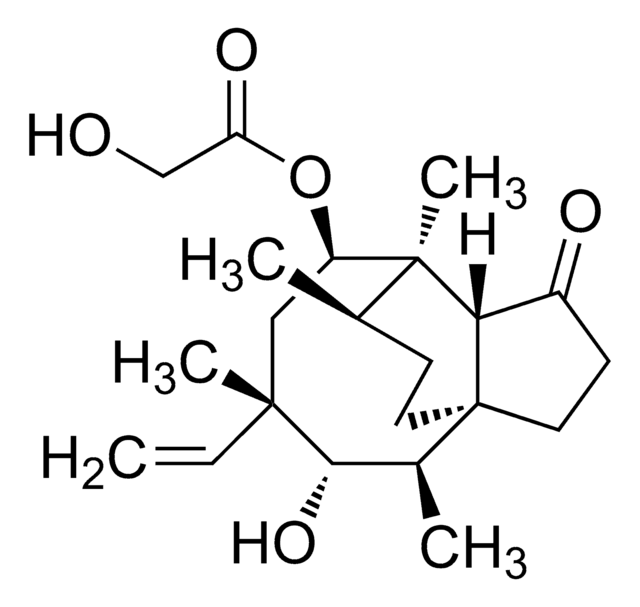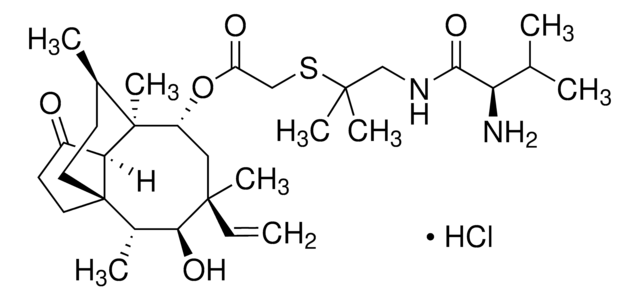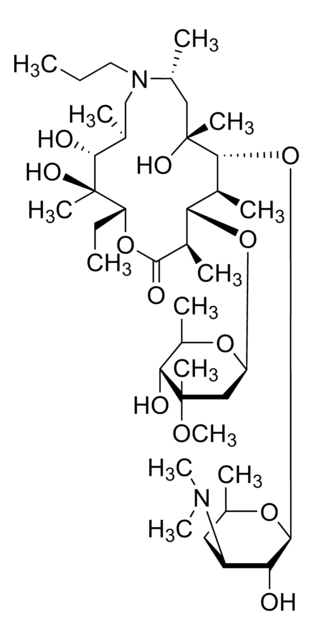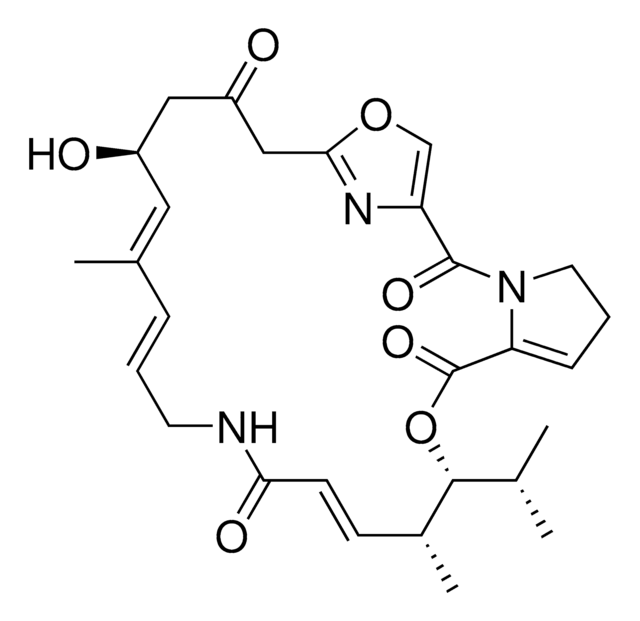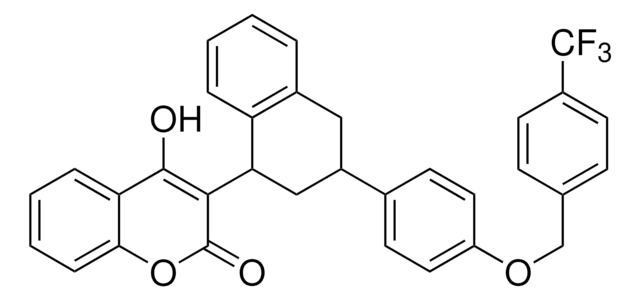Tiamulin is a viscous liquid at room temperature, so it is a little difficult to work with. The kind of vial that is used for Product 34044-100MG-R is what Sigma-Aldrich Germany typically uses for amounts of about 10 mg to 100 mg. Tiamulin does not have a good chromophore, so we don't have an extinction coefficient for it; that is, if there were a chromophore, one might be able to quantitate it by measuring the UV absorbance of a solution.Here are our recommendations:1. Heat the vial up to 50-60°C. This will significantly reduce the viscosity of the Tiamulin.2. If there is material visible in the cap of the vial, spin it down using a small benchtop centrifuge for a few seconds. Briefly warm back up to 50-60°C if the vial cools down significantly during centrifugation.3. Using a pipetter, carefully transfer about 10 microliters of the warm liquid into a tared vial on a balance.4. Obtain an accurate weight, and use that in your calculations.As the material is needed, the vial can be heated several times to 50-60°C, without harming it. The 100 mg is roughly 100 microliters, so following the recommendations above, you should be able to obtain about 10 samples from the vial of 34044-100MG-R.
34044
Tiamulin
VETRANAL®, analytical standard
Sinónimos:
(1S,2R,3S,4S,6R,7S,14R)-6-[(2-Diethylaminoethylthio)acetoxy]-3-hydroxy-2,4,7,14-tetramethyl-4-vinyltricyclo[5,4,3,01.8]tetradecan-9-one
Seleccione un Tamaño
Seleccione un Tamaño
About This Item
Productos recomendados
grade
analytical standard
Quality Level
product line
VETRANAL®
shelf life
limited shelf life, expiry date on the label
technique(s)
HPLC: suitable
gas chromatography (GC): suitable
application(s)
forensics and toxicology
pharmaceutical (small molecule)
format
neat
mode of action
enzyme | inhibits
storage temp.
2-8°C
SMILES string
CCN(CC)CCSCC(=O)O[C@@H]1C[C@@](C)(C=C)[C@@H](O)[C@H](C)[C@@]23CC[C@@H](C)C1(C)[C@@H]2C(=O)CC3
InChI
1S/C28H47NO4S/c1-8-26(6)17-22(33-23(31)18-34-16-15-29(9-2)10-3)27(7)19(4)11-13-28(20(5)25(26)32)14-12-21(30)24(27)28/h8,19-20,22,24-25,32H,1,9-18H2,2-7H3/t19-,20+,22-,24+,25+,26-,27+,28+/m1/s1
InChI key
UURAUHCOJAIIRQ-QGLSALSOSA-N
¿Está buscando productos similares? Visita Guía de comparación de productos
General description
Application
For detailed application information, please see the Frequently Asked Questions (FAQ) section at the bottom of this page.
Legal Information
hcodes
pcodes
Hazard Classifications
Aquatic Chronic 4
Storage Class
10 - Combustible liquids
wgk_germany
WGK 2
ppe
Eyeshields, Gloves, type N95 (US)
Elija entre una de las versiones más recientes:
¿Ya tiene este producto?
Encuentre la documentación para los productos que ha comprado recientemente en la Biblioteca de documentos.
Los clientes también vieron
-
What is the best way to remove a portion of the material from the vial, in order to prepare a standard from Product 34044, Tiamulin?
1 answer-
Helpful?
-
-
What is the Department of Transportation shipping information for this product?
1 answer-
Transportation information can be found in Section 14 of the product's (M)SDS.To access the shipping information for this material, use the link on the product detail page for the product.
Helpful?
-
Active Filters
Nuestro equipo de científicos tiene experiencia en todas las áreas de investigación: Ciencias de la vida, Ciencia de los materiales, Síntesis química, Cromatografía, Analítica y muchas otras.
Póngase en contacto con el Servicio técnico
